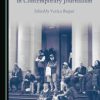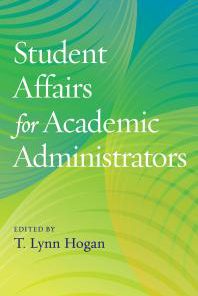The Crosscultural Language and Academic Development Handbook 6th Edition by Lynne T Diaz Rico ISBN 0134293258 9780134293257
$50.00 Original price was: $50.00.$25.00Current price is: $25.00.
The Crosscultural Language and Academic Development Handbook 6th Edition by Lynne T Diaz Rico – Ebook PDF Instant Download/Delivery: 0134293258 ,9780134293257
Full download The Crosscultural Language and Academic Development Handbook 6th Edition after payment
Product details:
ISBN 10: 0134293258
ISBN 13: 9780134293257
Author: Lynne T Diaz Rico
The Crosscultural Language and Academic Development Handbook 6th Edition Table of contents:
PART ONE Learning
1 Learning about the Language Learner
Learning Outcomes
Common Beliefs about Teaching English Learners
Misconception 1: Exposure and Immersion Are the Answer
Misconception 2: One Size Fits All
Misconception 3: Specially Adapted Instruction in English Is “Just Good Teaching”
Misconception 4: Effective Instruction Means Nonverbal Teaching
English Learners: Demographic Trends
Psychological Factors That Influence Instruction
The Learner’s Background
Naming Practices and Forms of Address
Age
First-Language Proficiency
Types of Bilingualism
Previous L2 Experience
Assessed L2 Level
Prior Academic Success
Likes/Dislikes
Psychological Factors: Social–Emotional
Self-Esteem
Motivation
Anxiety Level
Attitudes of the Learner
Psychological Factors: Cognitive
Cognitive Style
Learning Styles
Sociocultural Factors That Influence Instruction
Family Acculturation and the Use of First and Second Languages
Family Values and School Values
Cultural Factors That May Present Challenges for English Learners
Institutional Support for Language-Minority Students
Tracking
Testing
Curriculum Design
Pedagogy
The Physical Structure of the School
Disciplinary Policies
The School Culture
The Limited Role of Students
The Limited Role of Teachers
Limited Family and Community Involvement
Academic Risk Factors
Resilience in the Face of Risk Factors
Academic Engagement
Long-Term English Learners
Sociocultural Support for L1 in the Classroom Environment
SUMMARY
LEARNING MORE
Further Reading
Web Search
Exploration
Experiment
2 Learning about Language Structure
Learning Outcomes
Language Universals
Language Is Dynamic
Language Is Complex
All Languages Have Structure
Phonology: The Sound Patterns of Language
Phonemes
Pitch
Stress
The Sound System as Written Language
Morphology: The Words of Language
Morphemes
Word-Formation Processes
Clipping
Acronyms
Computer/Text Abbreviations
Blends
Syntax: The Sentence Patterns of Language
Semantics: The Meanings of Language
Pragmatics: The Influence of Context
Language Functions
Appropriate Language
Conversational Rules
Classroom Interacting Patterns
Turn Taking
Topic Focus and Relevance
Conversational Repair
Classroom Discourse
Nonverbal Communication
Body Language
Gestures
Facial Expressions
Eye Contact
Communicative Distance
Conceptions of Time
SUMMARY
LEARNING MORE
Thinking It Over
Web Search
Exploration
Try It in the Classroom
3 Learning about Second-Language Acquisition
Learning Outcomes
Historical Theories of Language Teaching and Learning
Grammar-Translation Methodology
Structural Linguistics
Behaviorism
Audiolingualism
Direct Teaching and Mastery Learning
Advantages and Disadvantages of Behavioral Methods for Second-Language Teaching
Current Theories of Language Development and Second-Language Acquisition
Transformational Grammar
Cognitive Approaches to Language Learning
Krashen’s Monitor Model
Cummins’s Theories of Bilingualism and Cognition
Separate or Common Underlying Proficiency
Basic Interpersonal Communication Skills and Cognitive Academic Language Proficiency
Learning Strategies and CALLA
Indirect Strategies
Direct Strategies
Cognitive Academic Language Learning Approach (CALLA)
Teaching Strategically
Schema Building
Scaffolding
Information-Processing Theories of Learning
Brain-Compatible Learning
Neurolinguistic Research about Brain Function
Constructivist Learning
Communicative Competence
The Social Context for Language Learning
Discourse Theory
Semiotics
Translanguaging
SUMMARY
LEARNING MORE
Further Reading
Web Search
Exploration
Experiment
PART TWO Instruction
4 Oracy and Literacy for English-Language Development
Learning Outcomes
Critical Oracy and Literacy
English-Language Development Standards
State English-Language Development Standards
Integrating Language Skills
Listening
Listening to Repeat
Listening to Understand
Total Physical Response
Listening for Communication
Speaking
Situations for Spoken Discourse
Oral Language as an Integrated Skill
Improving Oral Proficiency
Vocabulary Development
Reading
Transferring Literacy from First to Second Languages
Students without Literacy in First or Second Languages
Environmental Print
Meaning-Based
A Silent Period in Reading
Low-Anxiety Environment
Motivating Activities
Integration of Structure and Function
Integration of Content and Literacy
Balanced Literacy Instruction for English Learners
Meaning-Centered Approaches
Bottom-Up Approaches
Phonics
Phonics for English Learners
Phonemic Awareness
Explicit Phonics Instruction
Frustrations with Phonics
Approaches to Teaching Reading
Standards-Based Reading Instruction
Emergent Literacy
The Basics of Learning to Read
The Three-Stage Reading Process
Strategies for English Learners’ Literacy Instruction
Language Experience Approach
Self-Monitoring
Forming Visual Images
Literature-Based Reading
Literacy Communities
The Three-Tier Model of Instruction
Tier I: Core Reading Program
Tier II: Strategic Supplemental Intervention
Tier III: Intensive Intervention
Writing
Texts and Contexts
The Writing Process
The Six Traits Approach
Writing in the Age of the Internet
Writing Poetry
Error Correction and Grammar in Oracy and Literacy Instruction
Treatment of Errors
Teaching Spelling
Treatment of Grammar
Oracy, Literacy, and Technology
Technology-Enhanced Language Learning
TELL Impacts Literacy Instruction
TELL Supports Strategic Learning
TELL and CMC Increase Communicative Abilities
TELL Supports Learner Autonomy
TELL Enhances Creativity
TELL Brings Together a Classroom Learning Community
Technological Literacy
Learning Online
Upcoming Technologies
SUMMARY
LEARNING MORE
Further Reading
Web Search
Exploration
Collaboration
5 Content-Area Instruction
Learning Outcomes
Principles of Support for English Learners in Academic Content Areas
A Model for SDAIE
Teacher Attitude
Content
Content Objectives
Language Objectives
Learning-Strategy Objectives
Materials and Texts
Connections
Bridging1: Developing Experiences
Bridging2: Linking from Students’ Lives
Schema Building
Comprehensibility
Contextualization
Modeling
Speech Adjustment
Comprehension Checks
Interaction
Student Opportunities to Talk
Clarification of Concepts in the Primary Language
Re-Presentation of Knowledge
Content-Area Application
Social Studies
Content: Flexible, Thematic Curricula
Connections: Linking to Prior Knowledge
Comprehensibility: Contextualizing Instruction
Interaction: Cooperative Learning
Re-Presenting Knowledge: Linking Instruction to Assessment
Literature
Content: Material Selection
Connections and Comprehensibility: Into, Through, and Beyond
Interaction: Literature Response Groups
Interaction: Maintaining the First Language
Mathematics
The Language of Mathematics
Content: Learning Strategies
Connections: Using Students’ Experiences
Comprehensibility: Modeling Technology and Other Tools
Comprehensibility: Differentiated Instruction
Interaction: Working in Groups
Re-Presenting Knowledge: Alternative Assessment
Science
The Language of Science
Content: Common Themes
Connections: Keeping a Science Notebook
Comprehensibility: Modeling
Interaction: Talking about Lesson Content
The Visual and Performing Arts
Physical Education
Instructional Needs beyond the Classroom
SUMMARY
LEARNING MORE
Further Reading
Web Search
Exploration
Discussion
6 Theories and Methods of Bilingual Education
Learning Outcomes
Foundations of Bilingual Education
Historical Development of Bilingual Education
Early Bilingualism
Language Restrictionism
Assimilationism
The Rebirth of Bilingual Education
The English-as-Official-Language Movement
The Struggle to Respect Dual-Language Skills
Bilingualism in the Modern World
Legal Evolution
Federal Law and Judicial Decisions
State Law
Educational Issues Involving Bilingual Education
Underachievement
Segregated Schools
Dropping Out
The Myth of “Super Achievement.”
Placement Issues for English Learners
Access for English Learners
Organizational Models: What Works for Whom?
Submersion
The Teaching of English-Language Development (ELD)
Pull-Out ELD
ELD Class Period
Content-Based ELD
Sheltered Instruction/SDAIE
Transitional or Early-Exit Bilingual Education
Developmental or Maintenance Bilingual Education
Immersion Bilingual Education
U.S. Enrichment Immersion
Dual-Language Immersion
Newcomer Centers
Research Studies on Program Effectiveness
Instructional Strategies
Language Management
Time
Personnel
Subject
Manner of Delivery
Primary-Language Use
Academic Learning
Second-Language Acquisition
Code Switching
Classroom Organization
Cooperative Grouping
Collaborative Teaching
Working with Classroom Volunteers
SUMMARY
LEARNING MORE
Further Reading
Web Search
Exploration
Looking at Classrooms
PART THREE Assessment
7 Language and Content-Area Assessment
Learning Outcomes
Educational Standards and Standardized Assessment
Advantages of Standards-Based Instruction for English Learners
Achievement Testing and No Child Left Behind
Disadvantages of Standards-Based Instruction for English Learners
Assessments under Common Core State Standards
Linking Assessment to Progress for English Learners
The English-Language Development (ELD) Framework
Linking Placement Tests to Language Development
Linking Standards-Based Classroom Instruction to Assessment
Purposes of Assessment
Formative versus Summative Assessment
Proficiency, Diagnostic, and Placement Tests
Achievement Tests
Competency Tests
Methods of Assessment
Linking Assessment to the Integrated Curriculum
Authentic Assessment
Performance-Based Assessment
Classroom Tests
Portfolio Assessment
Portfolio Conference
Standardized Tests
Norm-and Criterion-Referenced Tests
Preparing Students for Standardized Tests
Teacher Observation and Evaluation
Student Self-Assessment
Grading
Cautions about Testing
Reporting Assessment Results to Parents
Best Practices in Testing
Identification, Assessment, and Placement of English Learners in the Schools
Identification Procedures for English Learners
Assessment for Placement
Redesignation/Exit Procedures
Limitations of Assessment
Anxiety
Time Limitations
Rapport
Cultural Differences
Problematic Test Content
Equivalent First- and Second-Language Versions
Linguistic Bias
Cultural Bias
Class Bias
Content Bias
Interpretation of Test Results
Technical Concepts
Validity
Reliability
Practicality
SUMMARY
LEARNING MORE
Further Reading
Web Search
Exploration
Experiment
PART FOUR Cultural Diversity in the United States
8 Cultural Diversity
Learning Outcomes
Historical Perspectives
Contributions
Native Americans
African Americans
Hispanics/Latinos
Asian Americans
Arab Americans
Exploitation
The Impact of a Changing Population
Poverty among Minority Groups
The Education of Minorities
Immigration and Migration
Causes of Immigration
Economic Factors in Immigration
Political Factors in Immigration
Religious Factors in Immigration
Family Unification
Educational Attainment
Civic Engagement
Telling Their Stories
Migration
Migrant Education Programs (MEP)
Immigration Laws and Policies
U.S. Foreign Policy
Legal Status
Resources Available to Immigrants
The “DREAM” Act
SUMMARY
LEARNING MORE
Further Reading
Web Search
Exploration
Collaboration
9 Culturally Responsive Schooling
Learning Outcomes
Understanding Culture and Cultural Diversity
The Nature of Culture
Key Concepts about Culture
Culture Is Universal
Culture Simplifies Living
Culture Is Learned in a Process of Deep Conditioning
Culture Is Demonstrated in Values
Culture Is Expressed Both Verbally and Nonverbally
Societies Represent a Mix of Cultures
Culture Is Both Dynamic and Persistent
Culture Is a Mix of Rational and Nonrational Elements
Cultural Values Are Persistent
Cultures Represent Different Values
Even Diverse Societies Have a Mainstream Culture
Culture Affects People’s Attitudes toward Schooling
Culture Governs the Way People Learn
Learning Styles Are Culturally Specific
Investigating Ourselves as Cultural Beings
The Personal Dimension
Cultural Self-Study
Learning about Students’ Cultures
Ethnographic Techniques
Observations
Interviews
Home Visits
Students as Sources of Information
Parents as Sources of Information
Community Members as Sources of Information
The Internet
Participating in Growth Relationships
Sociocultural Consciousness
How Cultural Adaptation Affects Learning
Fears about Cultural Adaptation
Assimilation
Acculturation
Accommodation
Pluralism
Biculturalism
Cultural Congruence
Stages of Individual Cultural Contact
Striving for Equity in Schooling
Detecting Unfair Privilege
Fighting for Fairness and Equal Opportunity
Combating Prejudice in Ourselves and Others
The Dynamics of Prejudice
Racism
Teaching against Racism
Teaching Students to Oppose Discriminatory Behavior
Stereotypes
Overcoming the Cultural Deficit Model
Programs to Combat Prejudice and Racism
Institutional Racism
Classism
Discrimination
Reducing Interethnic Conflict
Promote Achievement with Culturally Responsive Schooling
Respecting Students’ Diversity
Acknowledging Students’ Differences
Educating Students about Diversity
Global and Multicultural Education
How the Identity of a Young Child Is Affected by Learning a New Language
Validating Students’ Cultural Identity
Classroom Practices That Validate Identity
Instructional Materials That Validate Identity
Promoting Mutual Respect among Students
Adapting to Students’ Culturally Supported Facilitating or Limiting Attitudes and Abilities
Cooperation versus Competition
The Use of Language
Participation Styles
Teacher—Student Interactions
Classroom Organization
Curriculum
Sustaining High Expectations for All Students
Challenging Students to Strive for Excellence as Defined by Their Potential
Motivating Students to Become Active Participants in Their Learning
Helping Students Become Socially and Politically Conscious
SUMMARY
LEARNING MORE
Further Reading
Web Search
Exploration
Collaboration
10 The Role of the Family in Schools
Learning Outcomes
Marshaling Family and Community Support for Schooling
Comparing a Deficit-versus an Asset-Based Model of Home–School Connection
Ways That Schools and Families Can Be Mutually Supportive
Bilingual, Bicultural Home–School Partnerships
Home–School Communication: Telephone Calls
Language-Specific Listening
Home–School Newsletters
Acquiring and Respecting Heritage Languages
Intralanguage Differences and Dialects
Cultural Differences in Same-Language Groups
Intracultural Values Differences
Same-Culture Generational Differences
Different-Language Home–School Partnerships Requiring Intercultural Communication
Patterns That Support Learning at Home
Tapping Family Funds of Knowledge
Reaching Out to Workers in the Community
Finding a Volunteer Coordinator
Identifying Community Advocates
Cross-Cultural Differences
Overcoming Cultural Deficit Assumptions
Structuring Parent and Community Partnerships
Recognizing Parental Rights
Issues in Parental Participation
Programs in Action
The New York City Model
The Importance of Leadership Positions
Overcoming Families’ Reluctance to Become Involved
Fear of Reprisal
School–Community Partnerships
SUMMARY
LEARNING MORE
Further Reading
Web Search
Exploration
Collaboration
PART FIVE Policy
11 The Role of Educators in Language Policy
Learning Outcomes
A Critical Approach to Language Policy
Tollefson: Power and Inequality in Language Education
Foucault: The Power of Discursive Practices
Fairclough: Critical Language Analysis
Bourdieu: Language as Social Capital
Cummins: Language Policies as Emancipatory
Language Policy: The Classroom
Educational Equity in Everyday Practices
The Policies Embodied in Teachers’ Plans
Policy at the School Level
The Cultural Climate of the School
Collaboration with Colleagues
School-Site Leadership
The Academic Ambiance of the School
Involving Parents/Families
Policy in Local School Districts and in the Community
Professional Growth and Service
The School Board
Community Support for English Learners
The Public Forum
Community Organizations
State Commissions and Professional Organizations
The Voice of the Expert
Professional Leadership Roles
Legislation and Public Opinion
Opposing Linguicism
Influencing Federal Policies
Federal Funds for Innovation
Federal Legislation
The National Spirit
SUMMARY
LEARNING MORE
Further Reading
Web Search
Exploration
Collaboration
12 Culturally and Linguistically Diverse Learners and Special Education
Learning Outcomes
Scenarios, Issues, and Principles in the Education of English Learners with Special Needs
Who Are CLD Learners with Special Needs?
Elisa’s Memory
Losing ELD Services after Referral
Conflict over Referral
Social and Emotional Adjustment
Sonia Doesn’t Read
Tran the Troubled
Issues Underlying the Scenarios
Complexities and Vexities
The Disproportionate Representation of Culturally and Linguistically Diverse Children in Special Education
Overrepresentation in Disability Programs
Underrepresentation in Gifted Programs
Principles for the Education of CLD–Special Education Students
Identification, Referral, Early Intervention, and Assessment of Students Needing Additional Mediation
The Referral Process: The Roles of the Classroom Teacher and the ELD Specialist
Background Experience and Previous School Settings
Response to the Classroom Environment
Cultural and Linguistic Background
Level of Acculturation
Learning Styles
Physical Health
Academic and Learning Problems That CLD Learners May Experience
Similarities between Ethnic Language Variations and Learning Disability Symptoms
Early Intervention
Roles of Classroom Teachers and ELD Teachers during the Process of Determining Eligibility for Additional Services
Testing for Special Education
The Descriptive Assessment Process
Family Support for Evaluation
Collaboration among ELD Resource Teachers and Special Educators
Definition and Principles of Collaboration
Collaboration among ELD Specialists, Mainstream Teachers, and Special Educators
Working with an Interpreter
Relationship of Continued ELD with Other Services
Direct Services
Indirect Services
Teaching Strategies for the CLD Special Learner
Adapting Listening Tasks
Adapting Reading Tasks
Adapting Writing Tasks
A Focus on Self-Expression
Assistive Technology
Adapting Homework Tasks
Assessing Student Performance in the Mainstream Classroom
Methods of Assessing the Success of Included Students
Assessing Students’ Work
Testing Accommodations for Students with Disabilities
Using the Results of Assessment
Universal Design for Special Populations of English Learners
Universal Instructional Design
English Learners with Communication Challenges
Teaching Visually Impaired English Learners
Teaching English Learners with Hearing Impairments
Autism Spectrum Disorders
SUMMARY
LEARNING MORE
Further Reading
Web Search
Exploration
Experiment
References
Name Index
People also search for The Crosscultural Language and Academic Development Handbook 6th Edition:
the crosscultural language and academic development handbook 6th edition
the crosscultural language and academic development handbook 6th edition pdf
the cross-cultural language and academic development handbook
crosscultural language and academic development
crosscultural language and academic development certificate
Tags: Lynne T Diaz Rico, Crosscultural, Language, Academic Development Handbook
You may also like…
Uncategorized
Linguistics - Linguistics
Uncategorized
Keeling Fetal and Neonatal Pathology 6th Edition by Yee Khong 9783030841683 3030841685
Engineering - Civil & Structural Engineering
Education & Teaching
Uncategorized












